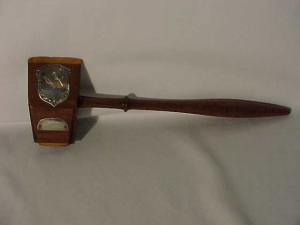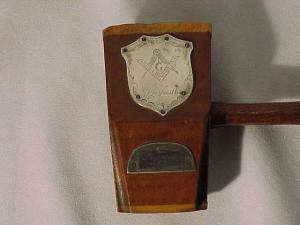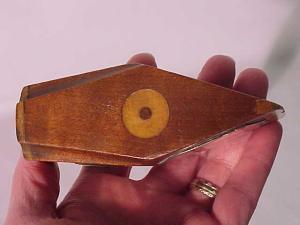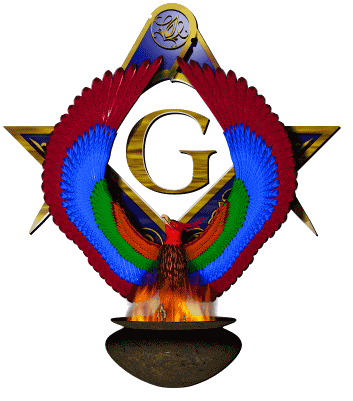|
Early Gavel with
Silver Plate Engravings





This early Masonic Gavel
measures 11 3/4 inches long. As you can see from the above photos, it
features two engraved silver fittings. The handle is made of oak, the head is made of
walnut, and the tip and back of the head are made of boxwood. The boxwood on the tip
of the head has the usual wear. Another characteristic that is unique to this gavel
is the "point within a circle" on the top of its head. This is a
symbol of great interest and importance, and brings us into close connection with the
early symbolism of the solar orb and the universe, which was predominate in the ancient
sun-worship. The lectures of Freemasonry give what modern Monitor have made an
exoteric explanation of the symbol, in telling us that the point represents an individual
Brother, the circle the boundary line of his duty to God and man, and the two perpendicular
parallel lines the patron saints of the Order-- Saint John the Baptist and Saint John the
Evangelist. But that was not always its symbolic signification, we may collect from
the true history of its connection with the phallus of the Ancient Mysteries. The
phallus was among the Egyptians the symbol of fecundity, expressed by the male generative
principle. It was communicated from the Rites of Osiris to the religious festivals
of Greece. Among the Asiatics the same emblem, under the name of lingam,
was, in connection with the female principle, worshiped as the symbols of the Great Father
and Mother, or producing causes of the human race, after their destruction by the deluge.
Here, then, was the first outline of the point within a circle, representing the
principle of fecundity, and doubtless the symbol, connected with a different history,
that, namely, of Osiris, was transmitted by the Indian philosophers to Egypt, and to the
other nations, who derived, as is elsewhere shown, all their rites from the East.

|
